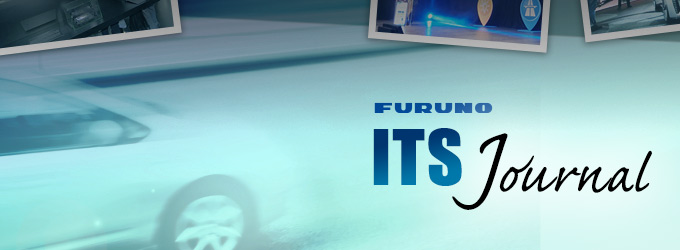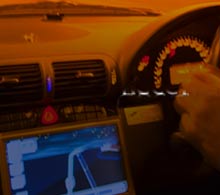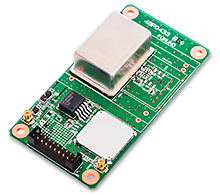Articles for ITS market
The International Home Care & Rehabilitation Exhibition.
There were many car manufactures with exhibits booths at this show.
Mobility was the focus for the International Home Care & Rehabilitation Exhibition
This year, the largest welfare event in Asia "International Welfare Equipment Exhibition" (October 12 - 14, 2016) was held in Tokyo. The latest in welfare equipment was exhibited Many countries such as Japan, the United States, Europe, China and South Korea were represented at the Show. In general, there is a strong demand for medical care and nursing care for elderly people and physically impaired people. In fact, the exhibits on nursing beds and management systems for treatment for hospitals and nursing care facilities were outstanding in the venue.
Meanwhile, a lot of systems for "moving" also appeared. The most prominent were the car manufactures. Toyota, Honda, Nissan, Mazda, Suzuki and Daihatsu set up a large booths like they do at large motor shows and arranged the latest welfare vehicles. The most common type of vehicles were minivans. For large minivans such as "Hiace" and "Caravan" are owned by hospitals and welfare facilities and used to carry facilitiy users to and from their homes. On the inside of the rear hatch-type door, there is a lift for loading wheel chairs. For medium and small minivans such as "Serena" and "Scienta", elderly people who use car chair and families who live with handicapped people also use for daily life activities. When the vehicle becomes more compact, they increasae the car height. This can be seen in the "Tanto" and "Spacia".
In addition, there are also mass production vehicles equipped with functions that allow accelerator and brake operation as well as steering operation with both hands and functions that allow steering operation be operated only by both feet. Among them, the most popular was the line of the Mazda sports cars like the "Roadster". It was very popular and many people gathered around it all the time and asked the explanation details for the vehicle’s equipment. The manufacturing method of such special equipment differs depending on the automaker. One is a case where outsourcing of special parts and when cars are delivered from car manufacturers to car dealers, the specialized parts are transfered to a specialist and parts are then installed by specialist. The other is to have special facilities for special vehicles as part of the manufacturing line of car manufacturers.
The Evolving of Personal Mobility and the necessary of legal improvement
In the booth of car manufacturers, the other conspicuous presence in passenger cars and minivans is the steering wheel type chair such as Suzuki "Senior Car" and Honda "Monpal". These cars have been spreading to all of Japan as a walking aid used that elderly people who do not have a driver license or those who have returned a driver license to the traffic division of a police because of old age or inability move around their homes. There were also products made in China and Taiwan, some of which are self-running with two wheels like "Segway", but this is not permitted for use on public roads. It is limited to private use and use within the facility. Although it was not exhibited in this international welfare exhibition, but the utilization of personal mobility "UNI-CAB" shaped like a "small chair" developed by Honda. They have begun including some demonstration tests. It is not only for elderly people, but also for use as a general mobility tool in large shopping malls and museums.
Such personal mobility is currently positioned as a "walking aid". There are almost no "obligations" or "regulations" regarding road traffic like bicycles, motorcycles and four-wheeled vehicles. Under such circumstances, there are many cases that users of an electric car chair or a handle type car chair injure or die because they fall down by themselves or by touching a car. For detailed data, the Japanese Consumer Affairs Agency compiles it as a report once every few years, so please refer to their website.
Regarding the personal mobility, Japan has always said "I want to do some kind of legislation." Among them, there is a proposal to incorporate personal mobility into the framework of "ultra-small mobility" which is undertaking verification tests throughout the country from six years ago. The government is considering establishing new vehicle regulations. As for this field, I have been reporting for many years and I am aware that there are many problems for developing new legislation. Besides, personal mobility can be an early countermeasure against the aging society and we think that "prescribed clarification" should be done at an early stage.
For personal mobility, a positioning system (GNSS / IMES) can be used indoors and outdoors inevitably
While promoting legal maintenance of personal mobility, I would like the Japanese government to be obligated is a position measurement system that can be shared indoors and outdoors. In outdoor positioning systems, it is natural to use GNSS (Global Navigation Satellite) by GPS (Global Positioning System) etc. Also, indoor positioning system includes Wi-Fi, Bluetooth, and others that utilize a gyro sensor.
Under such circumstances, IMES (Indoor Messaging System) by QZSS is attractive as the positioning system that can be shared indoors and outdoors. The GPS transmitter is installed indoors and the IMES signal is sent in the same band with the GPS to the indoor GPS receiver to perform the position measurement. Hitachi and others are selling the transmitter and SOFTBANK etc are selling the dedicated receiver. SOFTBANK is collaborating with the mobile network and in the automotive industry. It is put into practical use in experimental vehicles running in Honda's research laboratories.
The QZSS is aimed at complementing the GPS and the person in charge of the Japanese major electric machine manufacture that manufactures the QZSS testifies "the QZSS and the GPS are about the same thing." Therefore it is possible to create an environment where GPS can be received both indoors and outdoors.
However there is a problem here. The problem is this can only be used only in Japan. Furthermore, it is necessary to apply for installation of JAXA (Japan Aerospace Exploration Agency) for the permanent installation of the transmitter because JAXA is permitted to use IMES only for QZSS by the US government. As the US government, it shows a cautious attitude towards sending the same signal as GPS in the United States and other countries and regions.
Japan has own QZSS that is why we should take more opportunities to make effective use of the IMES benefits. Among them, it is desirable for IMES to mandate personal mobility in order to ensure peace of mind for elderly people and those with physical disabilities.
Writer introduction

Mr. Kenji Momota Automotive journalist
His major is the world automotive industry and he is also familiar with the energy industry, IT and the aging society problem as the related fields. He acts around the world based in Japan and USA and writes for the general magazines, the technology journals and the automotive related media etc.
He is also commentator of motor race and world's motor show on TV program based on his career of the driver of Indy Racing League and NASCAR. In recent years, he has been covering about a paradigm shift from developed countries to developing countries, the motorized vehicle like EV and the telematics.
FURUNO ITS Journal
Click here for the latest articles after 2022 (in Japanese)2022
- The "realistic" self-driving roadmap shown by the Japanese government and a hands-on report on the latest Subaru EyeSight X
- Will FCVs (Fuel Cell Vehicles) Become Popular? ~New Movement in Toyota and Honda~
- The 'Complete' online sales of new cars start in Japan. Will this new way of buying cars take root?
- Many Firsts! On-Site Report from Tokyo Auto Salon 2022 - The author, who knows what goes on behind the scenes, looks back on 40 years of history. -
2021
- "Moving toward zero traffic fatalities for four-wheeled and two-wheeled vehicles globally in 2050" ~Experience on Honda's latest safety technologies~
- Tsuneishi Shipbuilding's building and DX, an exclusive visit to the main factory
- Japan's Smart City: New Moves toward Practical Use
- When will self-driving buses (service cars) be put to "full-scale" practical use?
- Utilization vehicle data during disasters
- Toyota-led Connected Technology to Transform Commercial Vehicle Business -From light trucks to large trucks and buses-
- Toyota enters the connected car "Personalization" business
- Japanese automakers' carbon-neutral strategies swept up in ESG investment
- Drive experience of the latest autonomous vehicle models and advanced driving support systems
- Will carbon neutrality accelerate the trend to strengthen LCA (Life Cycle Assessment)?
- Semiconductor shortage exposes realities of the automotive industry
- Online Autonomous Driving Contest Enhancing development of Human Resources
2020
- What happens to CASE when gas cars are banned in Japan?
- When will Flying Cars be launched?
- Expectation vs. reality:Autonomous Driving in Japan
- V2X, Becoming increasingly important in autonomous driving
- Technology of Subaru “EyeSight X”
- Lifestyle-oriented French cars gain popularity in Japan
- Human-oriented smart cities are wanted
- MaaS and CASE, how would automotive industry change after COVID-19?
- The beginning of virtualization era, triggered by COVID-19
- Trend of EV shift and consumer demands
- TOYOTA Press conference about ADAS - Releasing algorithm for "sudden acceleration suppression during attempted sudden acceleration" free of charge -
- The Japanese automotive industry in 2020 - 3 turning points -
- "Using a smartphone while driving" and "Level 3 automated driving"
2019
- Motor show business model is at a turning point - Tokyo Motor Show Report -
- Commercialization and monetization of MaaS - ITS World Congress Singapore Report -
- Android Automotive pays attention to V2X - Report from the Frankfurt Motor Show 2019 in Germany -
- Automobile Distribution Revolution and DCM (Data Communication Module)
- Connected business potential and newly proposed "eMaaS" by Honda
- 5G services for practical use are multiplying
- Connectivity technologies attracting attention due to frequent traffic accidents
- Shanghai Motor Show report -SUV, EV, Automated car & 5G-
- Drone Business roadmap and updates to Michibiki (Quasi-Zenith Satellite System)
- MaaS (Mobility as a Service) "town development." Full-scale promotion for a national project
- CES organizer states "Data Period in 2020s." Transformation of the Automotive Industry in CES, US "-CES2019 Report-"
- "Return to Origin" directed towards the age of change, automatic operation and connectivity
2018
- New proposal for Private Car Automated Driving Level and other Hot 5G Technology Topics
- Standardized EV charging infrastructure concerns in Europe, US, Japan and China - Kobe EVS 31 field report -
- Touring a pure car carrier and a test drive of the latest hybrid car
- Planning stage products are exhibited at the newly established visualized mobility service "TOYOTA MOBILITY SHOWROOM".
- Potential “Community Car-share” program promoted by local residents
- CES Asia Report 2108
- Companies attempt new Vehicle-to-Infrastructure communications, including traffic volume measurements and vehicle positioning. -ITS Asia Pacific Forum in Fukuoka-
- Geneva show in Switzerland. Flying cars and MaaS (Mobility as a Service) were hot topics.
- EV (Electric Vehicle) proposals by country
- MaaS competition through service mobilization, M & A and technical field collaboration is accelerating. - The CES 2018 Report -
2017
- Big data’s initiative and fight for the automotive industry. Cooperation among companies becomes increasingly important.
- Connected car and road-to-vehicle communication automatic operation
- ETC (Electronic Toll Collection) and ETC2.0. Current situation and projected future
- Rapid development of sharing economy
- Germany is first to recognize level 3 automated driving
- ITS EU 2017 Field Reports -Automatic Operation and the eCall-
- From Infotainment to ITS, the competitive area is spreading in the car big data industry.
- GTC (GPU Technology Conference) Report and the de facto standardization of AI (artificial intelligence)
- Renesas' new challenge! "e-AI Solution" and "Renesas Autonomy"
- The Automobile industry is shifting from a manufacturing industry to a service industry.
- The movement toward accident countermeasures for aging drivers in Japan
- Fusion of ride sharing and fully automated driving is advancing in the USA.
2016
- Overview of the Quasi-Zenith Satellite System (QZSS) and advancements toward full-scale practical use including the Tokyo Olympic Games - G-space EXPO 2016 report-
- Japan’s automated driving project "SIP-adus" will be a large demonstration experiment.
- The International Home Care & Rehabilitation Exhibition. There were many car manufactures with exhibits booths at this show.
- Japanese car manufacturers starting to concentrate on strengthening the ADAS system
- A new movement of legislation for autonomous cars
- Cyber Security and “AGL”, the new OS for automotive are hot topics in the connected car industry
- “High precision 3D map” the key future of autonomous car and pedestrian dead reckoning
- Chinese “BAT” is accelerating their business in the EV (Electric Vehicle) market
- Tesla's original connection to Taiwan and the new transportation system technologies.
- "The main topic" of the Geneva Motor Show was how to strengthen "pedestrian protection"
- The probe data business is getting more competitive
- Reporting directly from the 2016 CES show "Data services will soon become the main revenue source of automotive industry"
2015
- Do the automated driving systems need the GNSS (Global Navigation Satellite System) ?
- ETC Version 2.0 is coming soon. A new service was announced at the Tokyo Motor Show and the possibility that is could be used as a device for older drivers.
- "Connected Horizon" and "eHorizon". Germany's leading parts supplier accelerates strengthening of "Big Data" for business



 In the International Welfare Equipment Exhibition, large booths of major automobile manufacturers line up.
In the International Welfare Equipment Exhibition, large booths of major automobile manufacturers line up. Independent mobile body device made in China. In the stopped state, there are four auxiliary wheels, but while traveling, they are self-supporting with two wheels like "Segway".
Independent mobile body device made in China. In the stopped state, there are four auxiliary wheels, but while traveling, they are self-supporting with two wheels like "Segway". Honda's personal mobility "UNI-CAB" demonstration. Although it is mainly used indoors, there is a possibility of going outdoors. This is where positioning technology is necessary.
Honda's personal mobility "UNI-CAB" demonstration. Although it is mainly used indoors, there is a possibility of going outdoors. This is where positioning technology is necessary. Various systems for elderly people. Even in these situations, position determination is required irrespective of whether indoors or outdoors.
Various systems for elderly people. Even in these situations, position determination is required irrespective of whether indoors or outdoors. Indoor and outdoor positioning system using SOFTBANK's multi-GNSS terminal. It is being provided for in-house vehicles of Honda.
Indoor and outdoor positioning system using SOFTBANK's multi-GNSS terminal. It is being provided for in-house vehicles of Honda. GPS/GNSS Receiver&Chips and Modules (positioning and timing)
GPS/GNSS Receiver&Chips and Modules (positioning and timing)